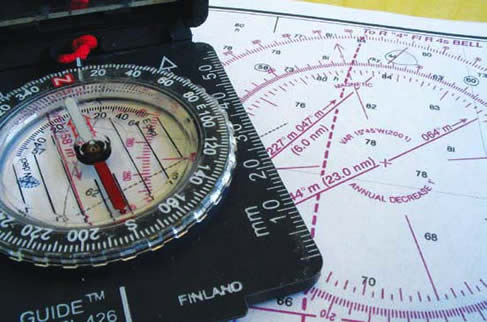How to Navigate When Kayaking

If you are planning on going into the open ocean on a small boat or a kayak, it is advisable that you learn a few very important things about navigation in order to make sure that you do not get lost in the open sea. Furthermore, while at open sea, fog can roll in anytime and it can then make you blind to your location and you will eventually be lost. Moreover, if you don’t have the proper knowledge of direction, you can become totally absorbed in the scenery. However, there are a few things that you can learn in order to avoid all kinds of worst case scenarios. Many people feel that navigation is as easy as North, South, East and West. However, it is not so easy and there needs to be a sound education about the navigational requirements.
Navigation is about knowing the distance and direction of your destination, how fast your kayak will travel through water, how the wind and currents will affect your kayak’s ability to gather speed and how you can deal with any problems or hazards that may arise during traversing the waters.
Whether on foot or out in the wilderness, being constantly aware of your current location is key to good navigation. And for a kayaker, having a strong knowledge of the map available is important as it will be filled with symbols of piers, buoys, buildings, bridges, rivers, headlands and straits that will give him an idea of where he is sailing. Every kayaker needs formal navigational skills in order to avoid any complications. A kayaker has an advantage of being able to see most hazards with plenty of time to avoid them.
Instructions
-
1
Most kayaks have a compass available on the deck or the cockpit. However, new people will struggle understanding these navigational equipments. It is better to have your own compass like the compass rose or Silva with the latter being more preferable as it has a red light inside it that can help you navigate during the night.
-
2
Charting location is another important aspect of navigation. If you know how to chart your way, you will always know exactly where you want to go. Laying out a course is practical. Charting location means that you should have a map with you with an accurate ruler and appropriate directions laid out for you. This map will help you triangulate your exact position.







